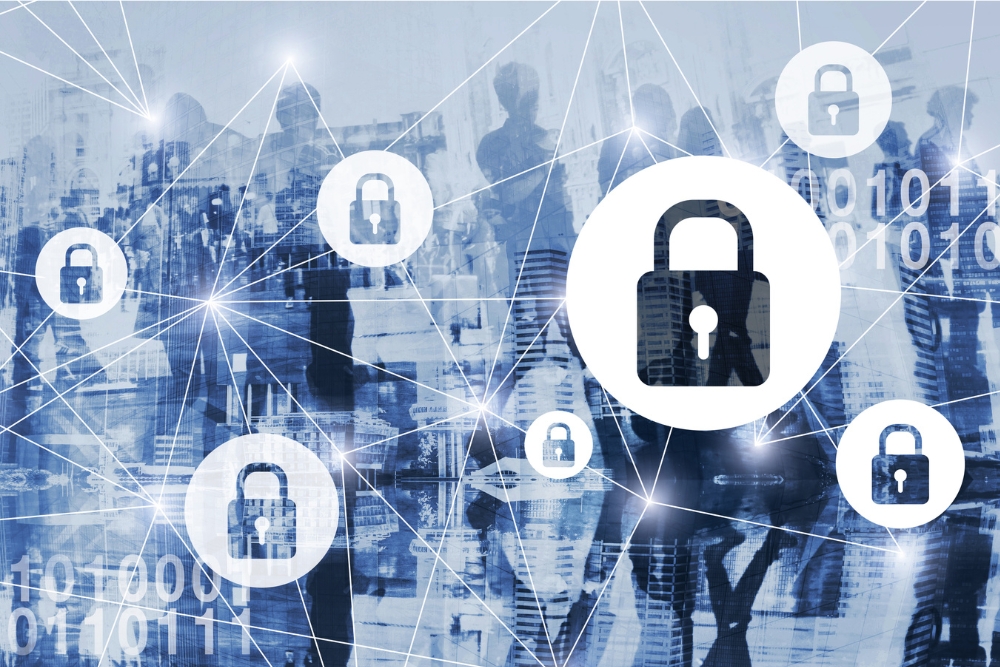Data Protection Strategies for Modern Facilities Management
Facilities management security breaches are a distinct category of cyber threats that have been on the rise in recent years. The role of facility security professionals is becoming more important as production processes become more data-driven. In this post, we explain facility security challenges and the impact of data breaches on facilities. We also list the tools and best practices to apply when building an effective facility security plan.

Understanding Data Security in Facility Operations
What does a facility security officer do? An FSO is an expert responsible for the daily administration of an organization’s security policies. This can include both physical security for visitors and employees and protection of assets such as data, physical workstations, and virtual workloads. This article is focused on data and digital infrastructure security.
Key Challenges in a Facility Security Plan
Even the smallest modern facility is a complex organization that requires ramified and multi-leveled digital infrastructure to run production and provide quality services. When creating a facility security plan, the following points are worth considering:
- Evolving threats and proper adaptation: Data and IT infrastructure security threats keep evolving and can bypass the most advanced protection systems. This includes artificial intelligence (AI) enhancements to malware that enable in-depth customization of cyberattacks. To keep up with improving capabilities of attackers, facility security plans need to lean on protection flexibility and cut threat response timings.
- Security and accessibility balance: Security measures usually suppose access restrictions for employees and visitors to neutralize potential threats and minimize the probability of human error. However, although prohibiting access is a reliable way to ensure security in IT, protection shouldn’t prevent employees from performing their duties. “The Principle of Least Privilege (PoLP) can help you tune facility security without sacrificing efficiency and convenience,” according to Sam Taylor from LLC.org.
How Data Breaches Impact Facilities Management
The IT environments of modern facilities are usually the cornerstone of production, which means they directly drive or influence nearly all internal and external processes. Thus, the data circulating across the infrastructure workloads is vital for the organization’s operations and revenue generation activities. Additionally, sensitive data (for instance, PII and credit card information) stored and processed to enable services is subject to legislative regulations.
A security breach leading to data theft or loss can cause significant consequences for a facility. Operational disruptions mean production interruptions that lead to financial losses. Unauthorized access to sensitive data can bring severe reputational damage to a facility, while compliance fines can be unaffordable and cause an organization to close.
Best Practices for a Facility Security Plan
What are security systems in facilities management? How do you build an effective facility security circuit? Consider following the best practices below to enhance the cyber protection of your environment.
Implementing Facility Access Controls and Monitoring Systems
Consider implementing access control and monitoring solutions to ensure reliable security across all levels of a facility’s IT infrastructure. Role-based access control (RBAC) helps ensure that employees can utilize workloads and data according to their roles and job responsibilities without the need to configure accesses individually. Applying security and resource monitoring for physical and virtual nodes and networks is another step to improve facility security effectiveness.
Securing IoT Devices and Connected Systems
A workload and any device with an internet connection can be an entry point for a data breach. Securing Internet of Things (IoT) systems alone requires a thorough approach. Consider applying the following measures to enhance IoT protection for facility security:
- Set up reliable passwords and strong authentication.
- Register your devices for centralized management.
- Keep critical storage and workloads isolated from IoT devices.
- Install IoT patches and updates on time.
- Disable unused devices.
- Apply encryption to connections wherever possible.
- Conduct penetration testing.
- Educate and train users.
Data Encryption for Sensitive Information
Organizations must encrypt sensitive data during transfer and throughout the retention period to comply with different standards and regulations such as PCI DSS or GDPR. Encryption can prevent unauthorized parties from reading data, thus mitigating the consequences of data leakage following a breach.
The Role of Email Validation in Facility Security
Email validation is a crucial yet often overlooked practice for enhancing facility security. It ensures that email addresses in your organization’s databases are valid, accurate, and free of fraudulent accounts. By preventing fake or malicious emails from infiltrating internal systems, email validation minimizes the risk of phishing attacks, unauthorized access, and data breaches.
Tools and Technologies for Facility Security
To create a functional and effective facility security plan, you need to use appropriate solutions. The market offers multiple cyber protection tools and technologies, and choosing the ones that suit your organization can be challenging. Below are some general recommendations to help you narrow down your search.
Cloud-Based Data Protection Solutions
Cloud-based facility security solutions enable IT and management experts to keep protection systems in sight and under control at any moment. Cloud-based software is designed for remote access. Thus, the specialist is not limited to a physical location to access the systems and can react to issues faster, which improves administration efficiency.
Also, implementing effective access control for both employees and users is simpler with cloud-based infrastructures. Cloud security can isolate particular applications from production workloads, strengthening the internal environment’s protection against unauthorized access. Adopting a cloud migration strategy allows organizations to transition securely while maximizing operational benefits.
Last but not least, cloud solutions can update automatically, allowing you to keep systems prepared for the latest threats without significant investments or protection downtimes. This offloads the facility’s IT specialists, enabling them to spend additional time and effort on tasks other than security management and maintenance. That way, cloud-based protection can also cut the system TCO.
AI-Powered Threat Detection Systems
Artificial intelligence has brought new challenges to cybersecurity, as AI enhancements to malware and hacking tools can accelerate and multiply attacks. This means that protection systems need AI-driven solutions to equalize defenses with lightning-fast attack timings and increasing sophistication.
Regular security solutions are rather reactive, relying on database updates and human operators to act in emergencies. This makes usual protection inefficient against AI-powered ransomware and other malware that can, for example, flexibly adjust to environments during the attack and mimic normal software behavior after infiltration. AI-enhanced security solutions apply machine learning to analyze large data volumes with top performance to effectively detect anomalies and accurately detect the latest threats.
The capabilities of AI-powered security mainly include:
- Anomaly detection: Machine learning models and statistical analysis help security systems detect malicious activities faster, providing more room for threat response before the key attack phase is initiated.
- Pattern recognition: Pattern recognition algorithms allow AI security solutions to detect and reveal typical cyberattack scenarios, thus contributing to their identification and outcome mitigation.
- Behavior analysis: AI can effectively collect behavior patterns of a normal user with the system activities across the facility’s environment, identifying deviations and sending out warnings about possible insider threats or external security breach attempts.
The main advantage of AI-enhanced protection systems over traditional approaches is their continuous improvement and proactive defense capabilities. Artificial intelligence integration provides facility security improvements via effective detection and neutralization of the most sophisticated malware before critical data is compromised, lost, or corrupted.
Backup and Disaster Recovery Planning Tools
Although cloud-based security and proactive solutions can empower IT environment security, their protection is not perfect. When other defensive approaches have failed and the original data is lost, a backup can save an organization. Facility database backups done regularly and in accordance with the highest industry standards are key to ensure data availability. Keeping the critical data accessible under any circumstances, organizations can support production continuity and ensure regulatory compliance.
Modern backup and recovery solutions are designed to effectively protect data and workloads in environments of any complexity, size, and type. Advanced automation, flexible recovery options, and convenient management features allow IT teams to cut administration expenses without sacrificing the protection efficiency.
Benefits of a Comprehensive Facility Security Plan
A comprehensive facility security plan can help organizations by providing the following enhancements:
Improving Operational Resilience and Efficiency
With a facilities management database and other digital assets protected from cyber threats, organizations can focus on production tasks and development. This optimization of business processes, among other activities, leads to cutting expenses and increasing revenue. As the internal IT infrastructure is functioning and the critical data is available on demand, employees can perform job duties without inconveniences and unexpected downtimes.
Building Trust with Stakeholders and Clients
With data and operations reliably protected according to a coherent facility security plan, an organization can ensure data privacy and stable revenue generation. Subsequently, this enables maintaining a positive and trusted reputation among clients. In addition, this can improve stakeholder trust, meaning that the organization can continue development and growth.
Frequently Asked Questions About Data Protection
What Are the Common Data Threats in Facilities?
The most common data threats in facilities are:
- Human error
- Insider threat
- Cyberattacks
- Malware
- Physical theft
How Do Regulations Impact Data Security Practices?
Regulatory requirements such as GDPR, HIPAA, or PCI DSS set standards for data security that organizations must comply with. This includes high-end data protection measures, encryption, retention, and deletion policies that are obligatory for covered entities. Organizations integrate the required data security practices on demand, as noncompliance can result in significant financial and reputational damages.
As the co-founder and vice president of product management at NAKIVO, Sergei Serdyuk is a driving force behind the company’s global product portfolio. With over 15 years of experience in the IT industry, Serdyuk possesses a wealth of knowledge in software product management, project management, virtualization, cloud, and data protection.
The post Data Protection Strategies for Modern Facilities Management appeared first on Facilities Management Advisor.

